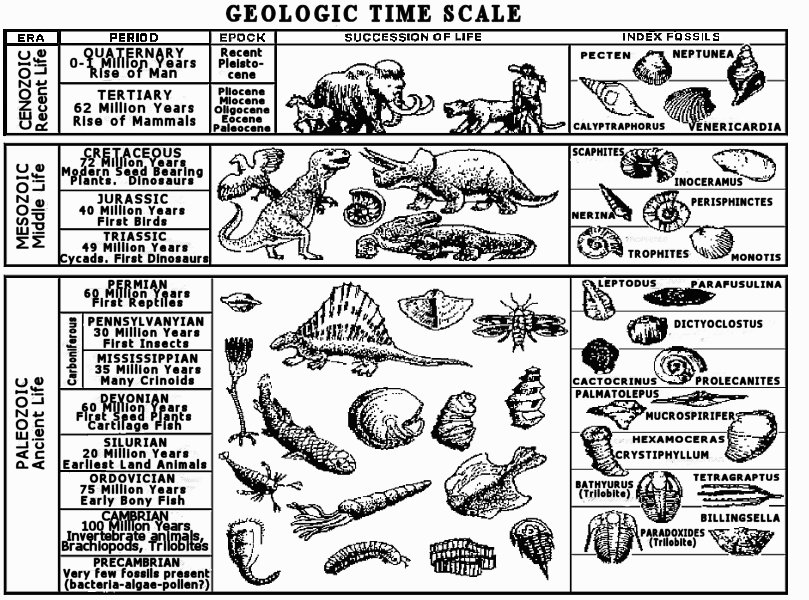C
Charlie Hatchett
Guest
Hey Bro.
Looks as if I'm going to be out of pocket for a few weeks. We may have found a fully intact dinosaur skelton at the site I'm investigating:
This potential dino was found in the stratum (younger) that eroded off the furnace structures I've been investigating:
http://cayman.globat.com/~bandstexas.co ... siron.html
Also, the USGS has requested two stone artifact specimens to date via Uranium/ Thorium decay. Their in the process of testing them as I type.
Anyway, didn't want to be rude, and leave you hanging without an explanation.
Chat with you in a few weeks.
Looks as if I'm going to be out of pocket for a few weeks. We may have found a fully intact dinosaur skelton at the site I'm investigating:
From: Charlie Hatchett
Date: 09/29/06 06:54:51
To: bwishoff@ev1.net
Subject: That darn fossil!
Good Deal Brother Man!!
Every time I walk past that critter, I just shake my head, and think, what a waste. Not much, or any erosion of the specimen since you were last here. I was really shocked that Julian didn't want to attempt the excavation. It appears to be a whole, or a least mostly intact specimen.
I've also been trying to figure out why your not out here working on this midden (subunit Mike). Another waste. I went by the midden the other day just to check on it, and found a little old man hiding behind some trees...just shaking. I felt so sorry for the guy. I chatted with him, and tried to put him at ease, and then continued on South to see how far the midden extended out into the cultivated field. When I came back by where he had been digging, he had disappeared into the woods. At the bottom of the feeder creek that runs by the midden, I've also found an exposed portion of Igl (subunit Tango):
http://cayman.globat.com/~bandstexas.com/site29.jpg
http://cayman.globat.com/~bandstexas.com/site29a.jpg
Dude,your not going to hurt my feelings a bit if you want to get permission to dig the site, and conduct the dig yourself (The Wishoff Site?). I just don't have time to hit everything along the creek. My focus is still on the Pleistocene gravels (equivalent to Wilson-Leonard, TARL designation Igl), and the worked flint unraveling out of them. I know...you think I'm crazy, but sometimes a fella has to go with his gut.
Dr. Jim Bischoff (emeritus), with the USGS, is Uranium-Thorium dating the carbonate on two of the artifacts as we speak. There's a team of three geologists that have a hunch these pieces unraveling out of the gravels might be from the Sangamonian Interglacial (80,000-220,000 B.P.), due to the thickness of the calcrete coatings. They feel the gravels might mark the beginning of the Wisconsin glacial advance. Because of the thickness of the calcrete coatings, it's postulated the coated flint pieces are at least as old as the last prolonged dry spell prior to the Wisconsin. Guess we'll see...
Here's the two specimens I sent him:
I.
http://cayman.globat.com/~bandstexas.co ... s%2032.jpg
4" biface- dorsal view
http://cayman.globat.com/~bandstexas.co ... s%2035.jpg
Ventral view
II.
http://cayman.globat.com/~bandstexas.co ... %20122.jpg
4.5" biface- dorsal view
http://cayman.globat.com/~bandstexas.co ... %20123.jpg
Ventral view
http://cayman.globat.com/~bandstexas.co ... %20124.jpg
Distal view
O.K., enough...I'm writing you a novel...lol. Call me or e-mail me when you get done with class, or tomorrow, and we'll chat some more.
Good hearing from you bro,
Charlie
-------Original Message-------
From: Bob Wishoff - dirtbrothers.org/outlawforpeace.com
Date: 09/29/06 01:54:28
To: Charlie Hatchett
Subject: That darn fossil!
Whatcha up to Charlie???
I've been driving 200 miles roundtrip for 2 hours of classes, four damn days a week... ain't it great?!
(am posting my lecture notes online... check it out sometime!)
ANYWAYS, I never hear from you... thinking you forgot me... LOL... but me, I never forget stuff LOL
Me and Charlie2 (Swenson) were drivin over to The University of Texas Archeological Research Laboratory to look some stuff up, when I get this brilliant idea to follow-up on that fossil... see if Julian did contact the Vertebrate Paleontology Lab... he hadn't...
long story short
I sent them the shots I took, and they think it's dinosaur... that the exposed bits are vertebrae (I told him skull or vertebrae)
They are going to work on getting out there and possibly extracting this important fossil--- much, much more important than a mere ancient croclike thing-- a real dinosaur type fossil...
hot damn, boy
yer fixin to be a star member o' de public son
if this proves to be a new species, why , they said they'd name the damn thing for you
wow Hatchetsaurus Tex
chop chop chew chew
gimme a holler!
(2morrow have classes from 10:30 till 1:00... am meeting with a prof after class-- call me around 5 or so bro, or sometime Saturday...
Bob
This potential dino was found in the stratum (younger) that eroded off the furnace structures I've been investigating:
http://cayman.globat.com/~bandstexas.co ... siron.html
Also, the USGS has requested two stone artifact specimens to date via Uranium/ Thorium decay. Their in the process of testing them as I type.
Anyway, didn't want to be rude, and leave you hanging without an explanation.
Chat with you in a few weeks.





